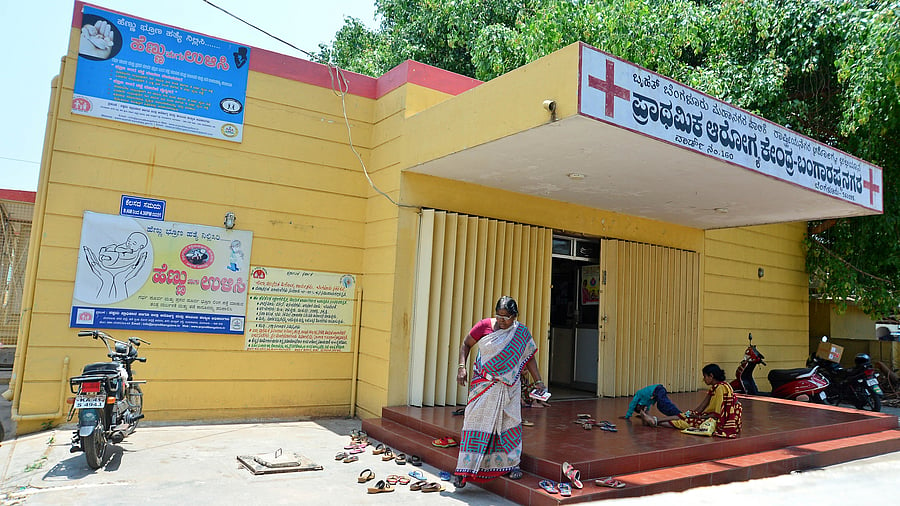
View of health center in Bangarappanagar, Bengaluru.
Credit: PV Photo/Ranju P
Slum residents utilise BBMP’s Primary Health Centres (PHCs) largely for antenatal checkups, immunisation and Thayi cards only, a recent study from Azim Premji Foundation among 21 slum communities in the city shows.
Although PHCs are supposed to handle minor ailments and checkups for non-communicable diseases (NCDs), the first external healthcare provider for slum residents is pharmacists, followed by private clinics.
The study involved a focus group discussion (FGD) among 258 representatives across the 21 communities, who also rated different categories of health facilities in their vicinity. They represented around 9,000 residents from settlements in Peenya, Hebbal, Bellandur, Kengeri, Koramangala, Nagarabhavi, etc.
The assessment of the 19 PHCs indicated lower rankings in terms of staff behaviour, perceived treatment quality, and timings. However, these PHCs received higher ratings for affordability and proximity.
All 21 communities said that, upon falling sick, they first approach pharmacists who dispense medicines over the counter. Only if they don’t recover in one to two days, do they approach private clinics.
Accessibility and night shifts work in favour of private clinics, along with good staff behaviour, high treatment quality, hygiene, smooth service and familiarity. Of the 71 private clinics that the communities used, three-fourths were within walking distance. But clinics scored low in affordability, waiting time, timings and accessibility for emergencies.
The average consulting fee in the clinics was Rs 140, including the cost of injections. When the cost of medicines is included, the total cost ranges from Rs 100 to Rs 1,000.
Dripta Bal, the principal investigator of the study, says, “Overall, the study showed that staff behaviour is as important a factor as affordability in slum residents’ decision to opt for a health facility. The next important factors were treatment quality and timings.”
Despite the low ratings of PHCs, the communities ranked government hospitals higher than private hospitals. Government hospitals are used for major issues like deliveries and surgeries, and they are perceived as accessible during emergencies, offering good facilities and treatment quality, and having convenient timings. These included referral and general hospitals, and specialty hospitals like Kidwai and Jayadeva.
The communities did not use private hospitals much, with affordability being the main hindrance.
“The study indicates areas of improvement. Offering convenient timings, such as night shifts, can improve the utilisation of PHCs,” Bal says.